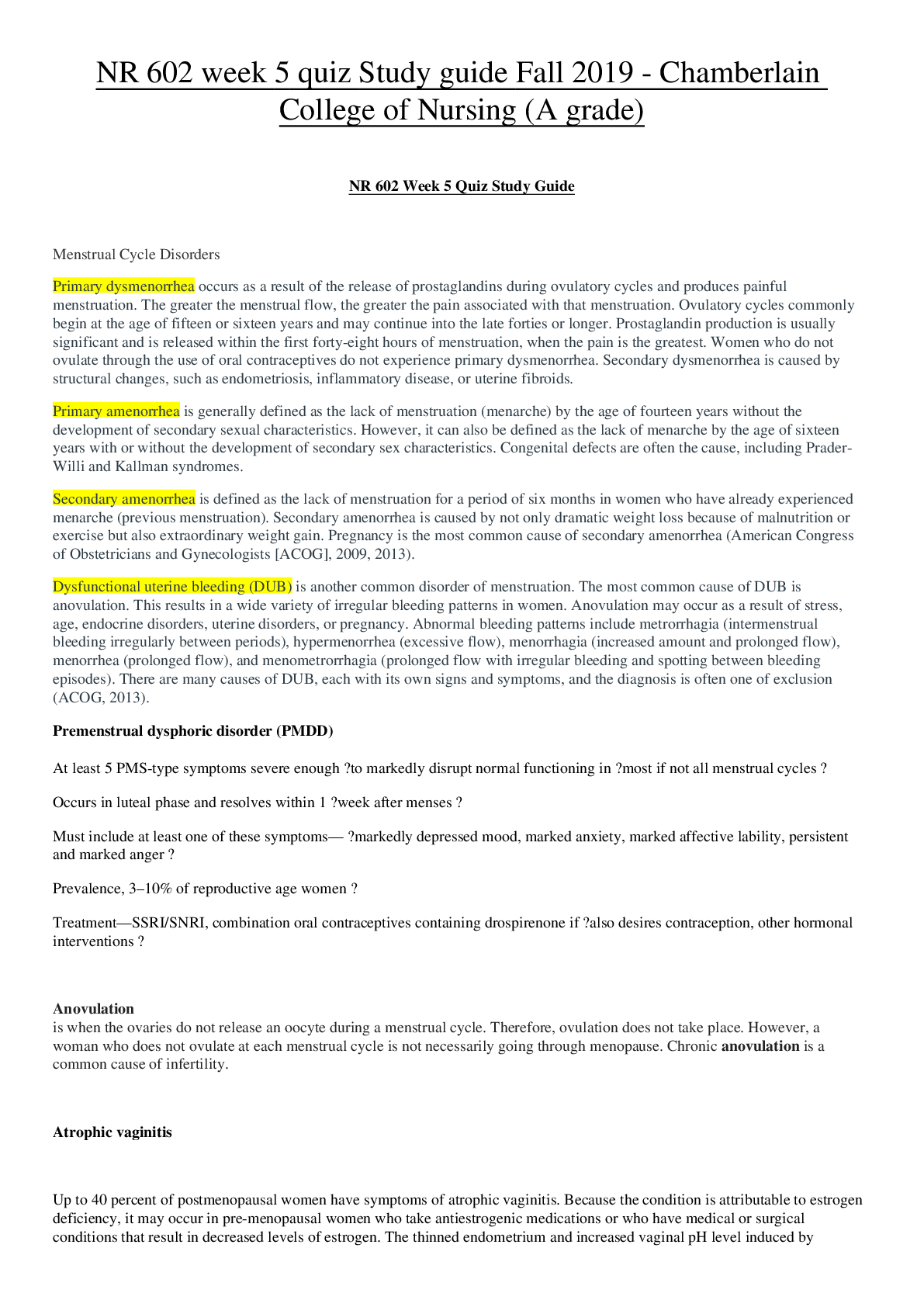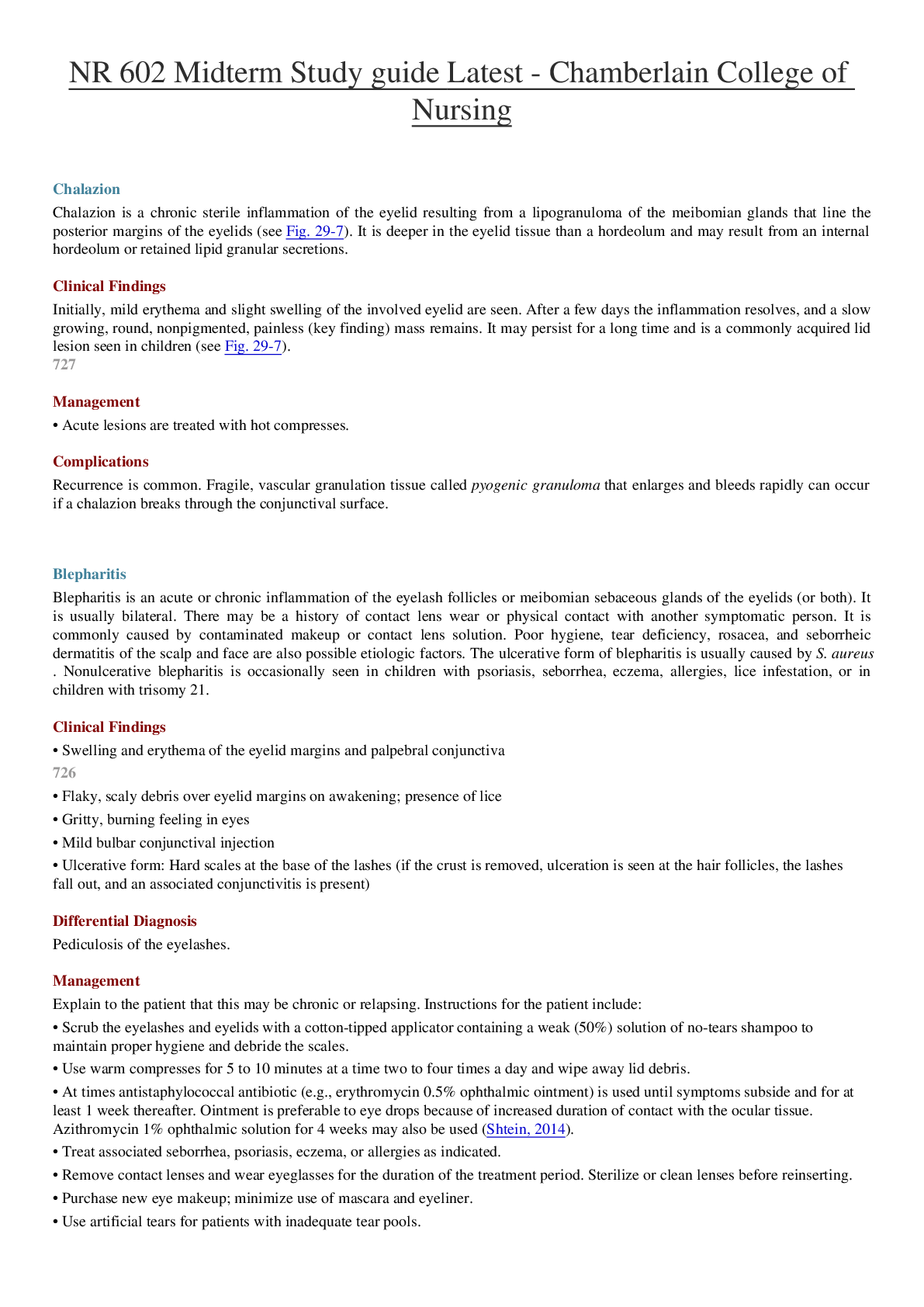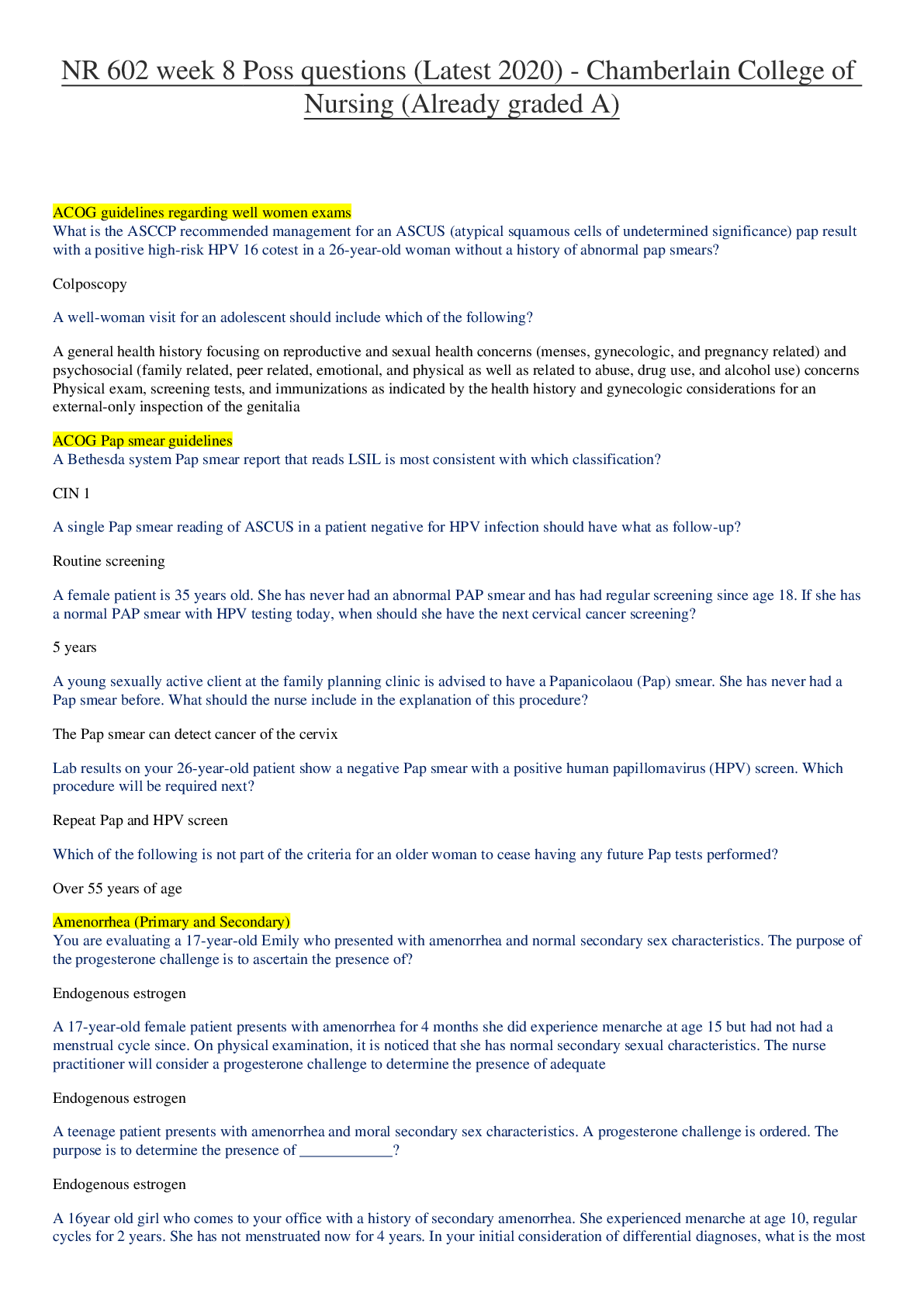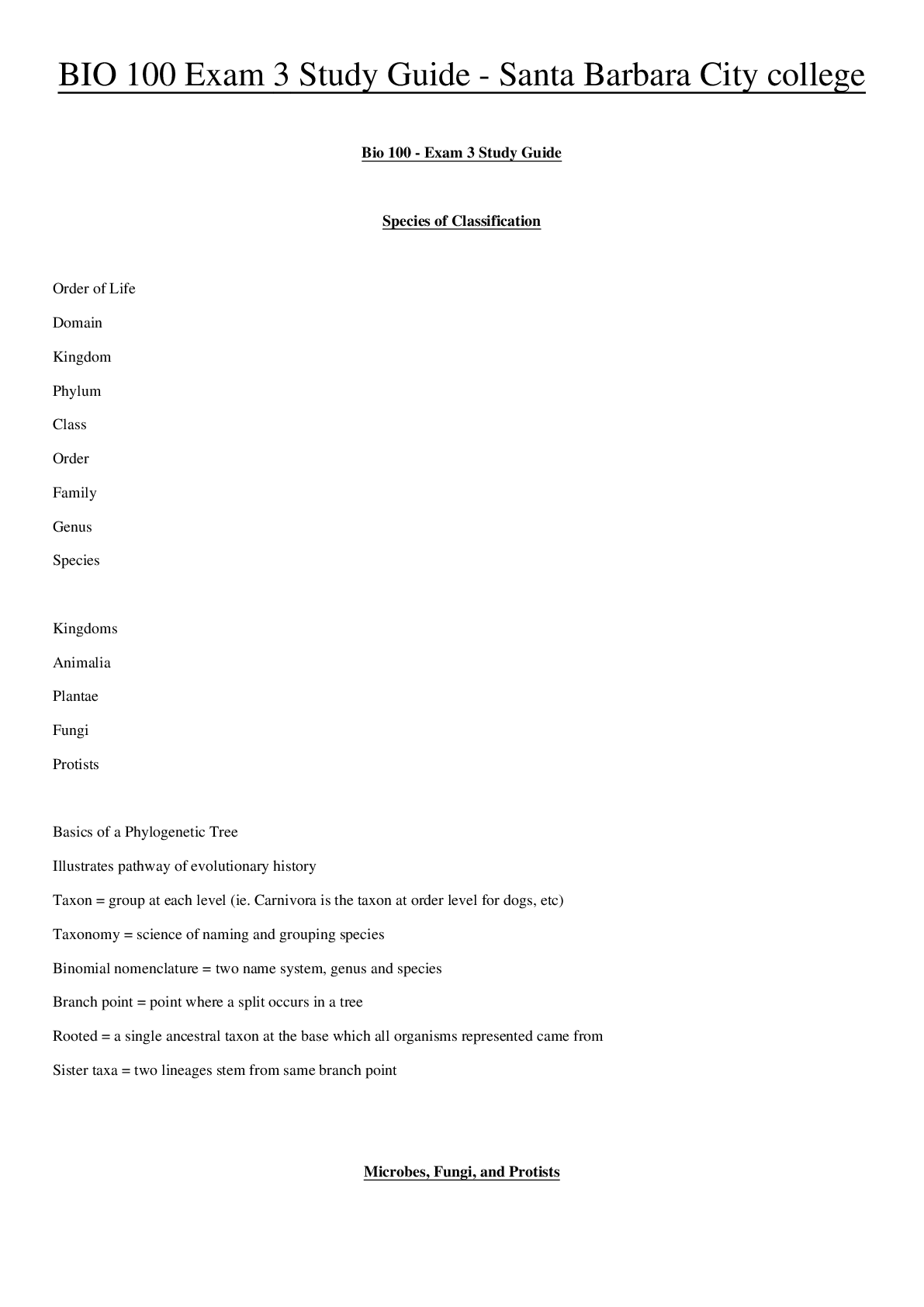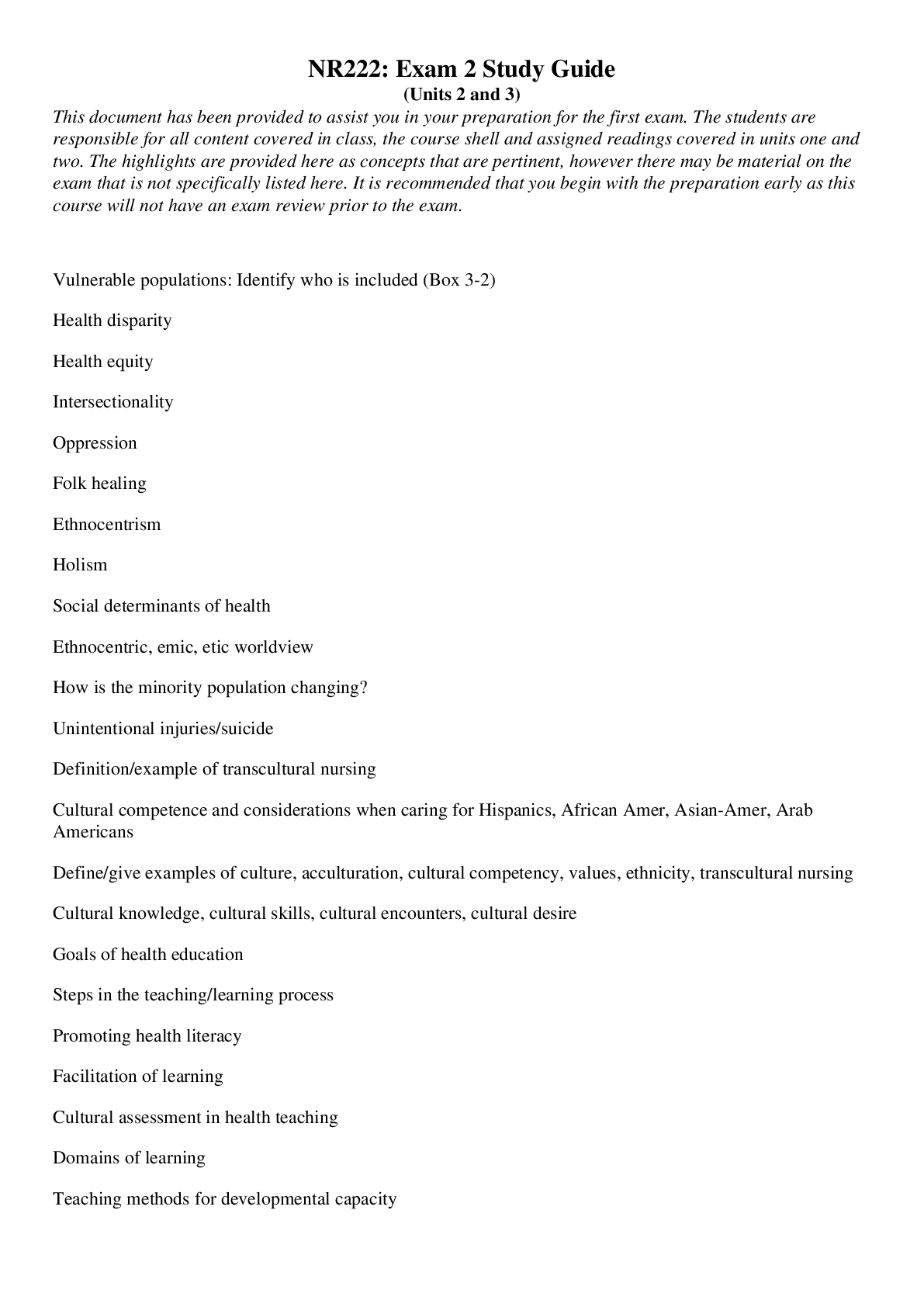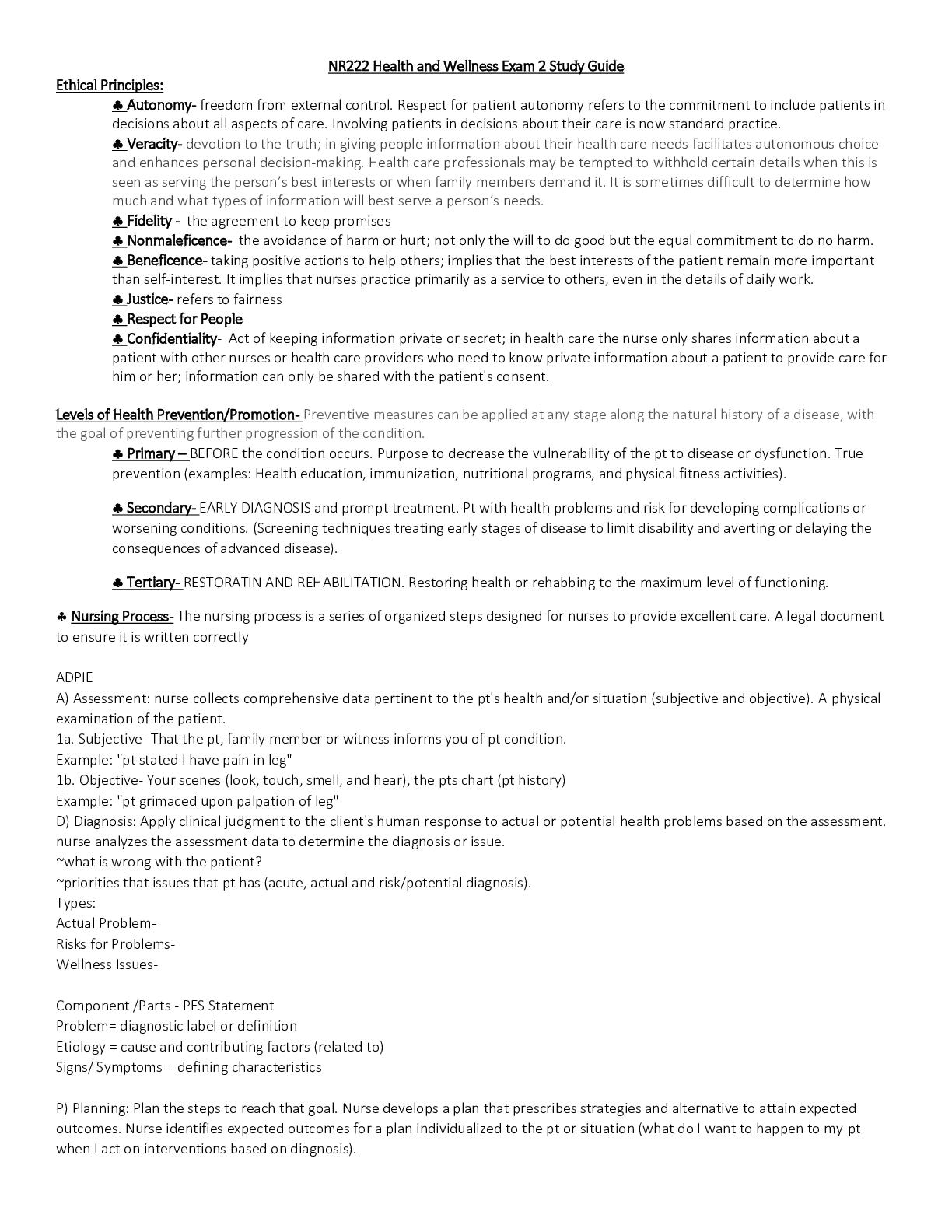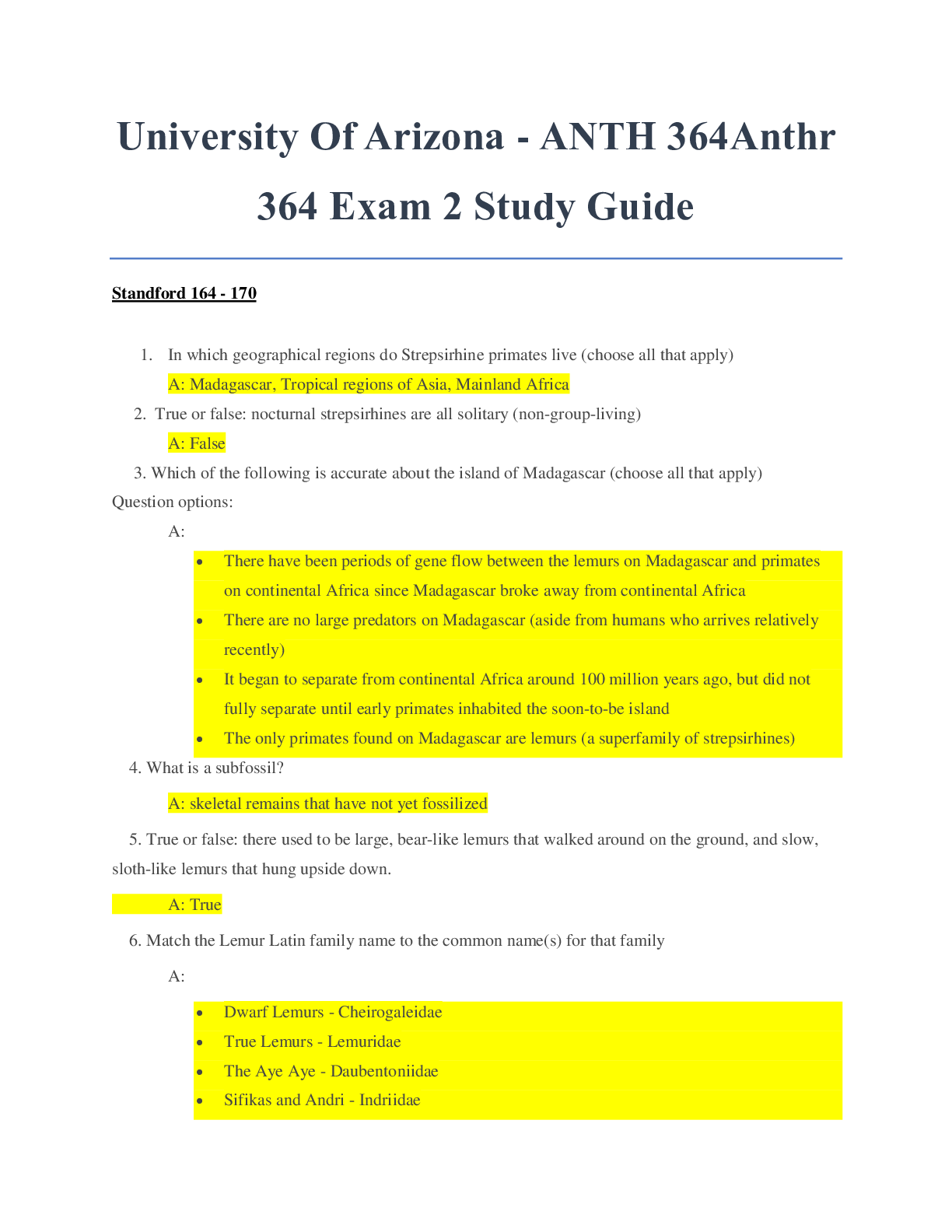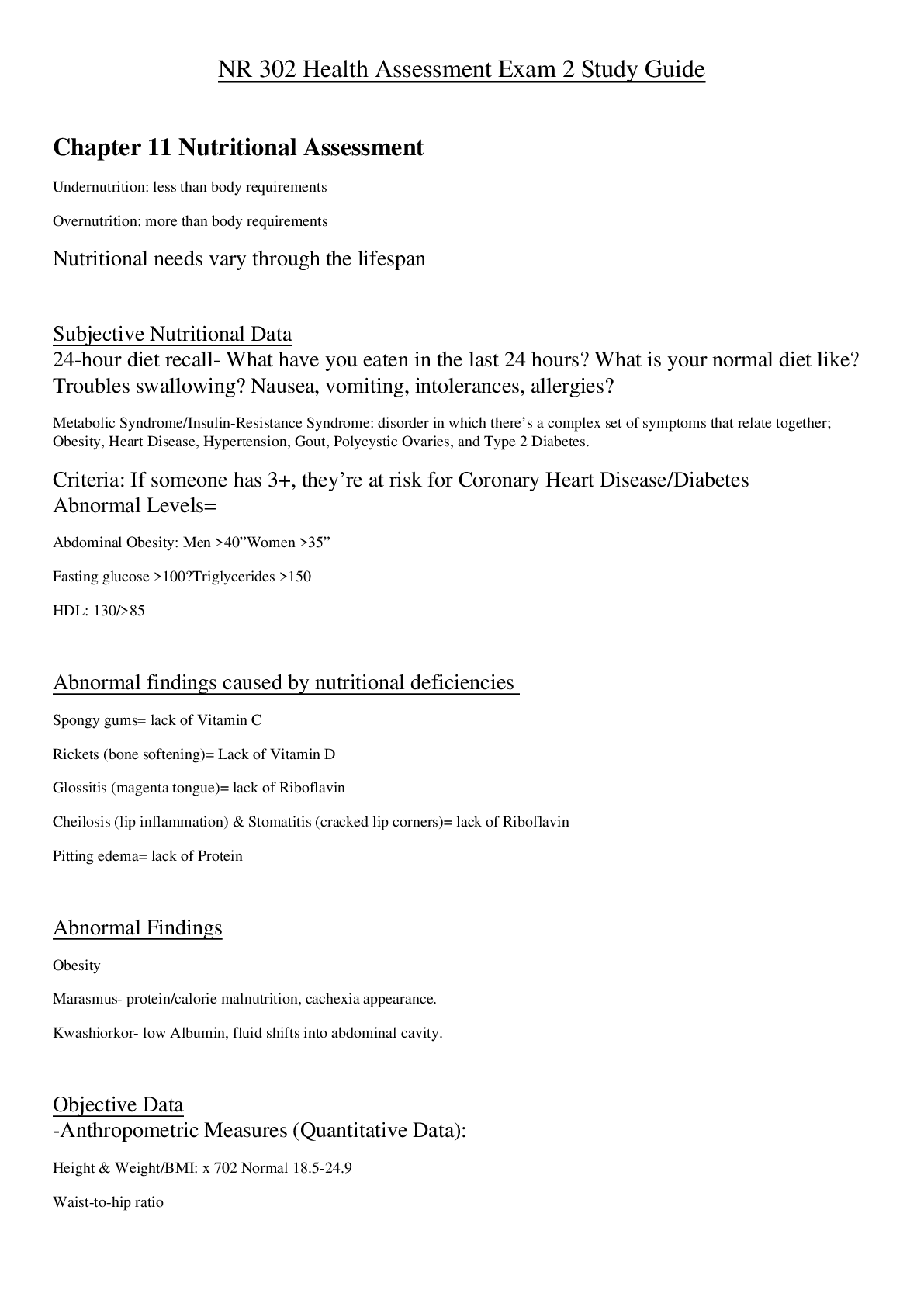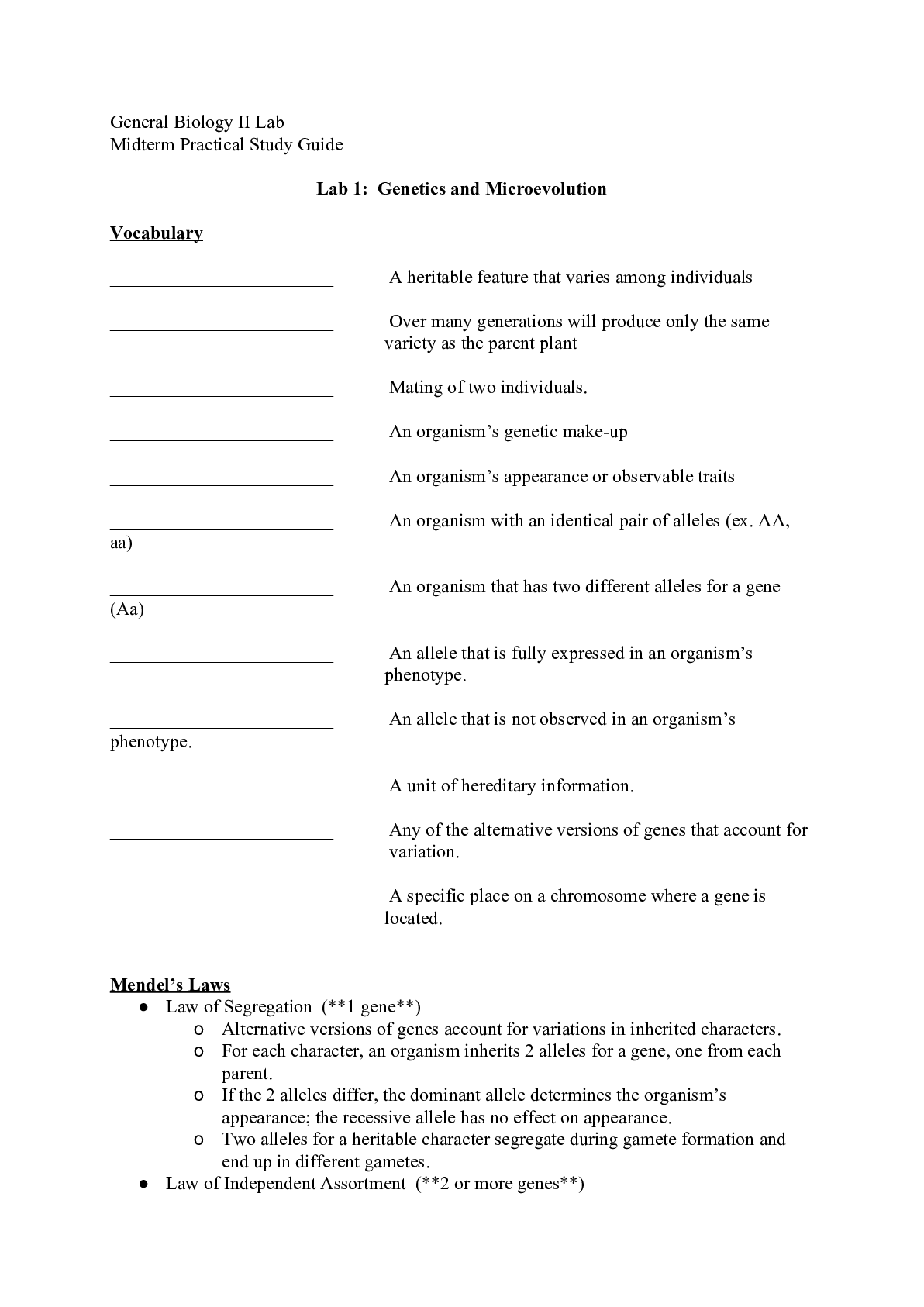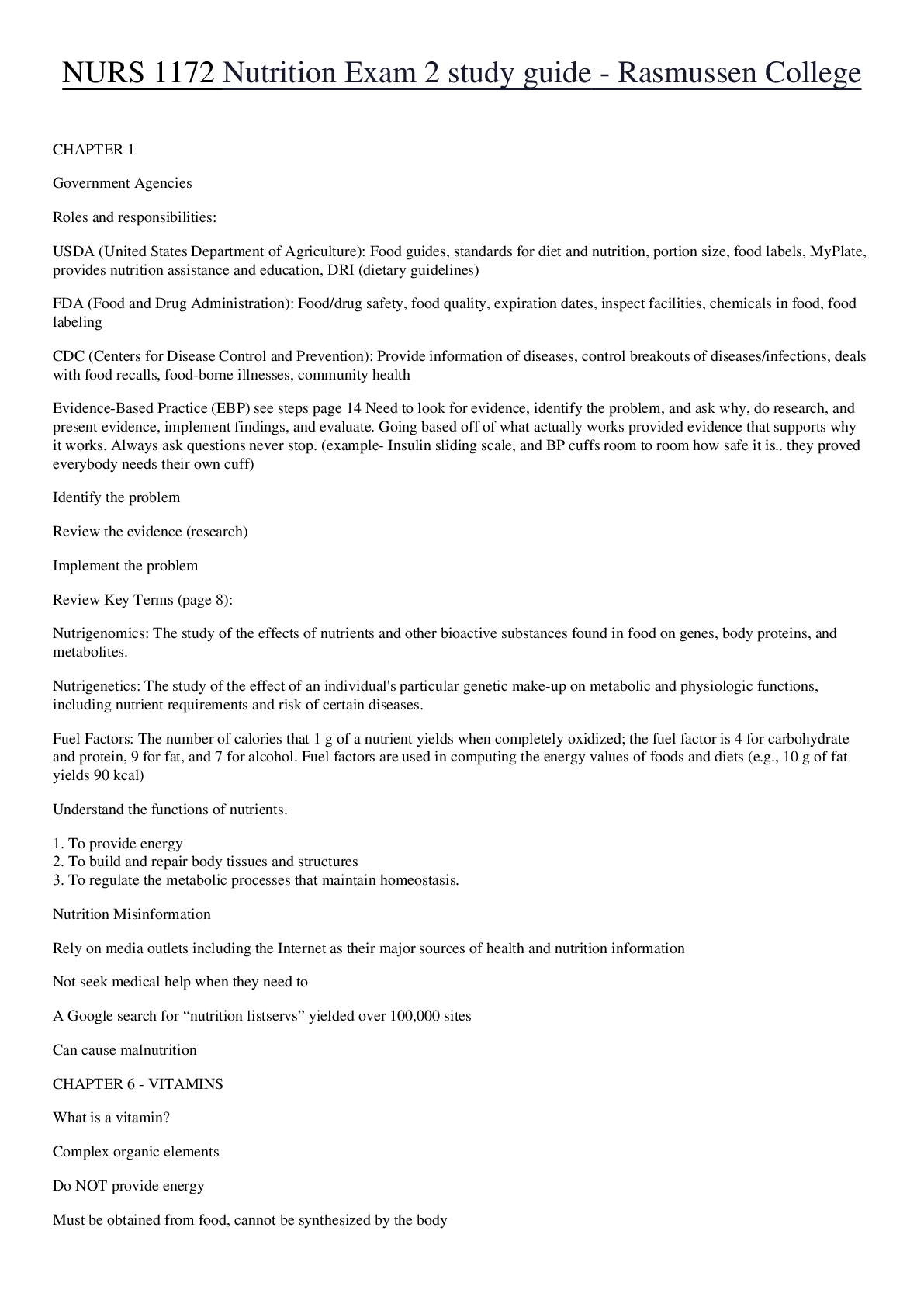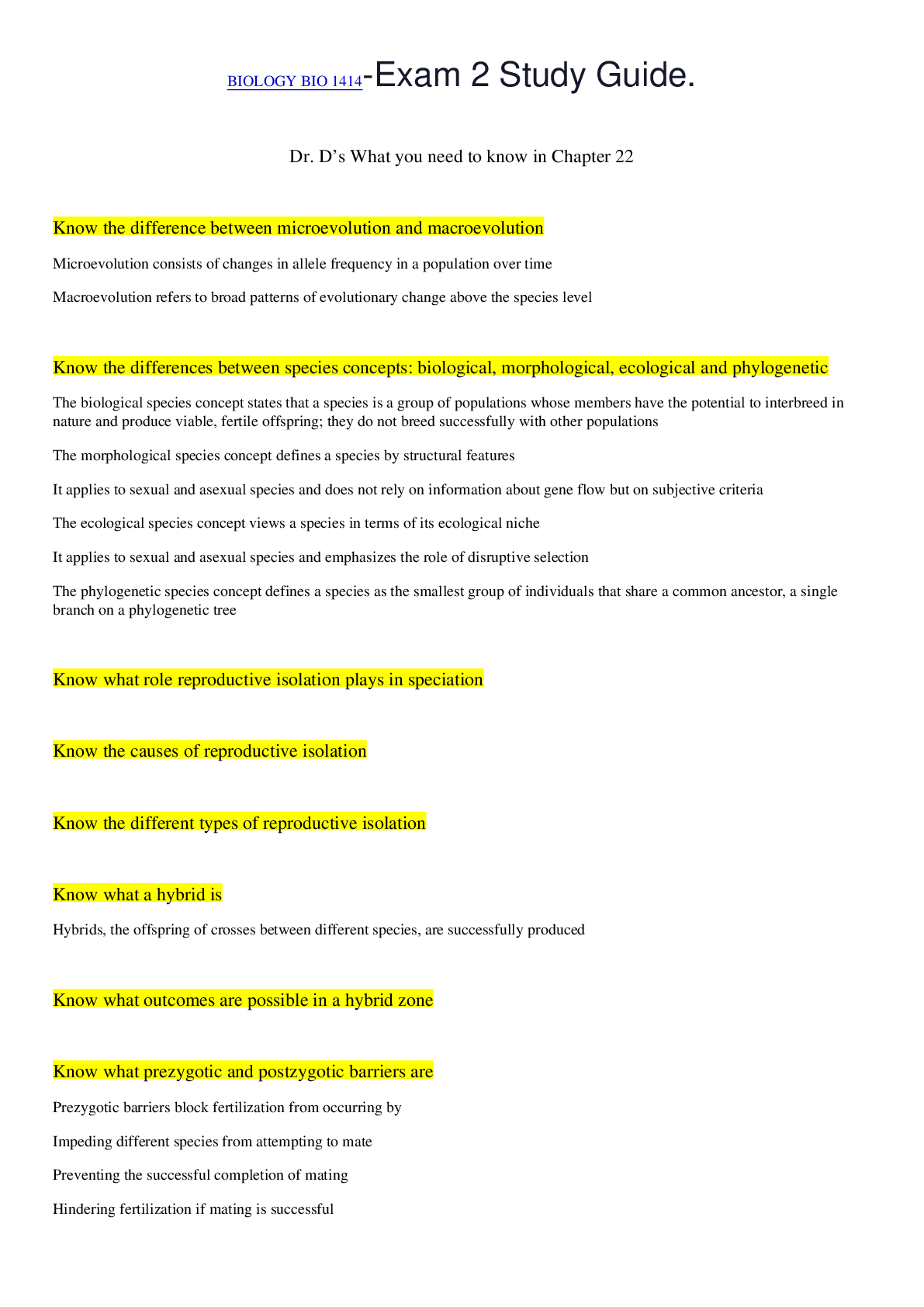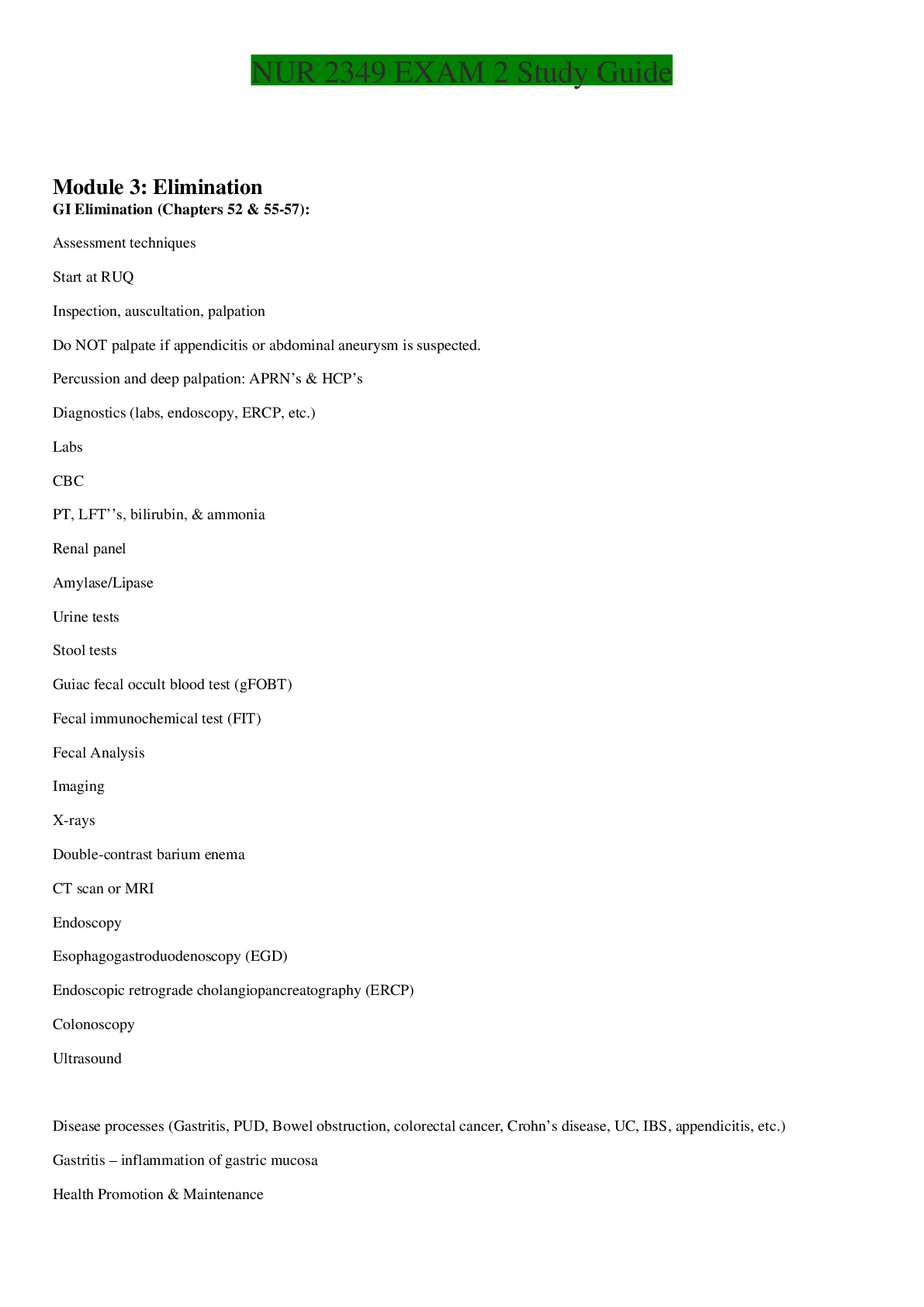Biology > STUDY GUIDE > BSC 1011 Exam 2 Study guide – Florida gulf coast University (All)
BSC 1011 Exam 2 Study guide – Florida gulf coast University
Document Content and Description Below
BSC 1011 Exam 2 Study guide – Florida gulf coast University Exam 2- ALL MEMORIZATION Hierarchical Classification Grouping organisms into increasingly inclusive (specific) categories; *Figure 26.3... ; Domain: EukaryaKingdom: Animalia phylum: Chordata Class: Mammalia Order: Carnivora Family: Felidae Genus: Panthera Species: Panthera pardus (Leopard) Based on shared characteristics (morphology); based on appearance alone without regard to how they are evolutionarily connected Taxa (Taxon): named taxonomic unit at any level; the name associated with the level of taxonomic group D K P C O F G S Ex. Mammalia, Panthera Increased divergence as you go backwards from species to domain; specific to broad Phylogenetics Phylogeny: a hypothesis of the evolutionary relationship between organisms; just because they look alike does not mean they are closely related and just because they do not look alike does not mean they aren’t related Goal: to explain evolutionary history of an organism (eukaryotes and/or prokaryotes); descent of a taxon from an ancestor *Figure 26.4 Clade: group of taxa sharing a common ancestor may be nested within another; a clade within a clade, within a clade Branch Point: divergence point represented by a node (speciation event) Sister taxa: share an immediate common ancestor Deeper branches: distant common ancestor=larger amount of divergence Outgroup: no shared characteristics (genomic or physiological); used as a control when comparing other species with the same ancestor Interpreting phylogeny: 1. Show pattern of descent, not phenotypic similarity a. Ex. A crocodile, bird and iguana; crocodiles are more related to birds than iguanas; birds evolved from a dinosaur (group of dinosaur that the T-rex was in) 2. Does not show the absolute ages of a species 3. Taxa did not evolve from the sister taxon Types of clades Monophyletic clade: common ancestor + all descendants; one phylogeny (grouping); the “largest” of the clades for a common ancestor because it has to involve every single descendant after it; *makes the most sense from an evolutionary perspective Paraphyletic clade: common ancestor + some descendants (but not all); if all descendants are D, E, F, and G then we only group D, E and F to call them a special name, for whatever reason we leave G out of the grouping;*most problematic because we are concerned with where the species are and how they related than where the ancestors are and how they relate, it is easier to move around ancestors than it is to change the species. Polyphyletic clade: taxa from different ancestors; B and C have one common ancestor but A and D are from completely separate ancestors, the polyphyletic clade includes A, B, C and D; more common than paraphyletic clades *Figure 26.11 and 22.17 Organisms exhibit: Pleisiomorphs: shared ancestral characteristics; - - - - - - - - - - Tendrils: thread-like leaf found in climbing plants (vines) that allows the plant to grab onto whatever it is growing on; poison ivy Storage: store water; ex are salt pickle and salt wort Spines: protection; photosynthetic in shoots; cactus Reproduction: used to attract pollinators toward the flower; ‘bracts’; the leaves are colored and not part of the flower but are used only to attract the attention of pollinators; poinsettia Feeding: carnivorous plants; feed on small animals; ex is sundo and venus fly trap Shoots: a system of nodes and internodes; nodes: location of leaf attachment; internodes: segment between leaves; *Figure 35.2 Axillary buds: develop at node for new branches; Apical buds: develop at tips of vertical growth (shoot) Functions: elevation of leaves for maximum sunlight; support fruit/flowers; transport fluids; production of new tissues because of the meristems Modified shoots: Rhizomes: horizontal underground shoot; *Figure 35.5; a plant that is grown underground where what sticks out of the ground is nothing more than the leaves; ex is ginger or banana tree Bulbs: vertical underground shoot composed of primarily leaves; composed of solid layers of leaves; ex is onion or garlic Stolons: horizontal shoots at surface; new plantlets at each node called ‘runners’; ex is a strawberry plant or crab grass Tubers: shoots that store water, carbohydrates and sugars; ex is a potato where the eyes on the potato is where the roots were located Tissues Three tissues: *Figure 35.8 Dermal Tissue- outer protective layer (skin); if herbaceous it is a single layer thick epidermis (very thin), sensitive to damage; if woody plant then multiple layers of periderm (bark) Ground Tissue- all remaining material (support); pith- internal to vascular; cortex- external to vascular Vascular Tissue- xylem and phloem, long distance transport Apical meristem- tips of roots & shoots for vertical growth; apex=tips; *Figure 35.11 Lateral meristem- (cork cambium and vascular cambium) extends along length of roots and shoots for girth; as it gets taller it gets wider to accommodate the increased length Cork cambium- cells become the bark (periderm material) in a woody plant Vascular cambium- cells become the xylem and phloem Rings in a tree stump is developed by the cork cambium during seasonal growth periods, they rest during dormant stages; each ring represents a dormant time period, the lighter space in between represents a growth period; does not work in all places of the world (wet and dry season) or evergreens (conifers) do not shed their leaves during the winter so they have no dormant period…etc. DREW/REVIEW SAYS If meiosis is going on (diploid to haploid) it is safe to say that a gamete is being created Contractile vacuole- water regulation for a ciliate; how much water goes in or comes out Ciliates will undergo conjugation when there is high pressure from outside sources (predation) to rapidly reproduce; if it is a safe environment they will undergo binary fusion Mitosis and binary fusion are very similar with few differences; process is different but the result is the same; binary fusion is for ciliates because of their two nuclei Macronucleus in the ciliate holds all of the possibilities of DNA for the organism but the micronucleus is the specific “trait” that is going to be expressed **KNOW THE LIFE CYCLES OF PLANTS** Charophytes are the closest relative to land plants Water is absorbed into the roots of plants through osmosis; travels up through the zylem through capillary action Seed= embryo + seed coat + food supply A group of sporangia is a sorus (multiple is sori) only seen in lycophytes and pterophytes *Have a general knowledge of the protists life cycle [Show More]
Last updated: 2 years ago
Preview 1 out of 15 pages

Buy this document to get the full access instantly
Instant Download Access after purchase
Buy NowInstant download
We Accept:

Reviews( 0 )
$7.50
Can't find what you want? Try our AI powered Search
Document information
Connected school, study & course
About the document
Uploaded On
May 27, 2020
Number of pages
15
Written in
Additional information
This document has been written for:
Uploaded
May 27, 2020
Downloads
0
Views
136







